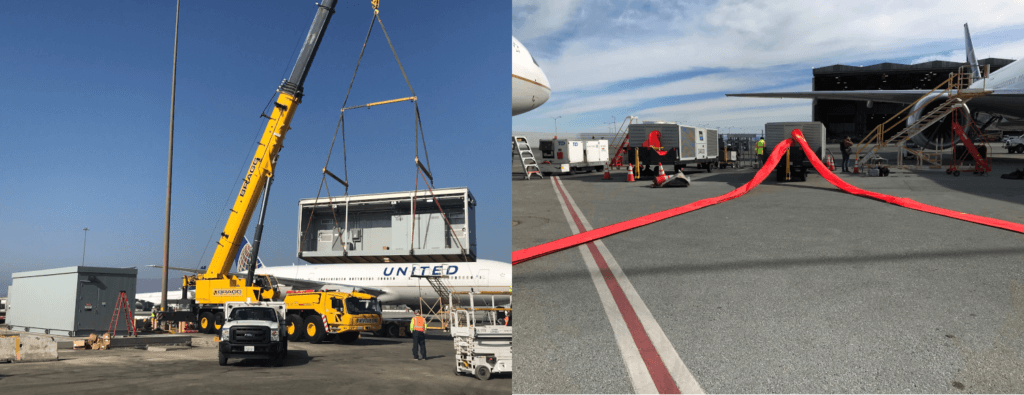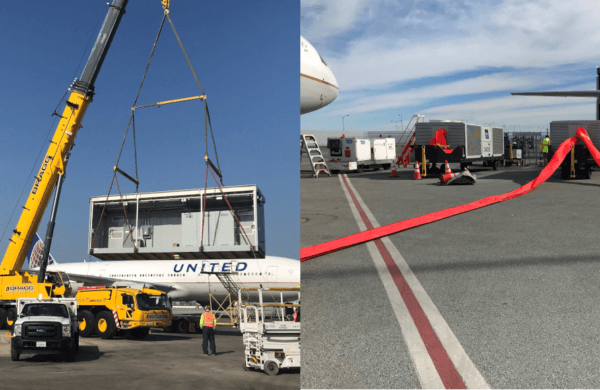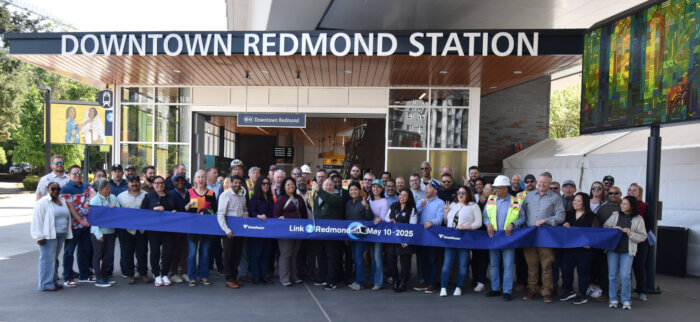Project info
- Case Studies
City and County of San Francisco Airport Commission - San Francisco International Airport
DeSilva Gates Construction and Graniterock Construction Joint Venture
AGS Engineering
Lean Engineering

Project Description
San Francisco, CA
The San Francisco International Airport (SFO) project entailed equipping five remain overnight parking (RON) areas with a 400 Hz generator and pre-conditioned air units at the busy airport site. Part of SFO’s five-year strategic plan and capital program, the project was conducted to help reach the airport’s carbon emissions and energy usage sustainability goals.
The airport received $10,577,500 in funding for the project from a Federal Aviation Administration Voluntary Airport Low Emissions program grant, the largest amount ever awarded for this type of grant.
The project’s contract included installation of power and air units and infrastructure to support a total of 10 RON spots on Plots 40 and 41 at SFO. Previously, power and cooled air were provided by the aircraft auxiliary power units, jet-fuel powered engines that burn fuel at rates between 30 and 110 gallons per hour. The emission reductions achieved over the lifetime of the project are estimated to be 186.8 tons of ozone precursors, 205.1 tons of carbon monoxide and 37.1 tons of PM2.5 (Particulate matter with an aerodynamic diameter of less than 2.5 microns).
The Plot 40/41 project required complex phasing and continuous coordination with multiple entities and individuals, including the Federal Aviation Administration (FAA) and airlines utilizing the parking spaces, as well as with another simultaneous project requiring significant coordination between design teams and input from the Project Manager. Partnering played a substantial role in this effort.
To support the project, the team held two professionally facilitated partnering sessions with more than 30 participants from the Owner, GC, Designers and other project stakeholders. Six scorecards were also used to support the partnering process between meetings, helping to ensure key concerns were communicated and addressed.
As part of the collaborative partnering process, the team established common goals, an issue resolution ladder and communication protocols in the initial partnering session. Moving forward, they carried partnering into every meeting, allowing the contractor and other project team members to be up front in their concerns. SFO and the design team tackled those concerns and leveraged new solutions. Through an integrated partnering approach, the team’s successful communication mitigated schedule extensions due to phasing complexities and budget increases from field changes. Collaborative partnering also allowed work to shift while staying within the original design intent by fostering positive attitudes and solutions as a collective unit.
Due in large part to their partnering effort, the team ultimately accomplished all its partnering goals and looks forward to working together again.
Partnering Results
- On Schedule
- $12,771 under budget
- Zero OSHA recordables
- Enhanced coordination
- No security incidents or unanticipated interruptions to airport operations
- High level of trust among teams
- Open, clear, and regular communication and feedback
- Zero claims
Project Notes
- 431-day schedule
- $14.7 million
- 13,300 Work Hours
- Delivery Method: Design-Bid-Build
- Procurement: Competitive Bid
Awards
International Partnering Institute (IPI) – 2021 Partnered Project of the Year Ruby Award, Civil Category, Under $25M.




